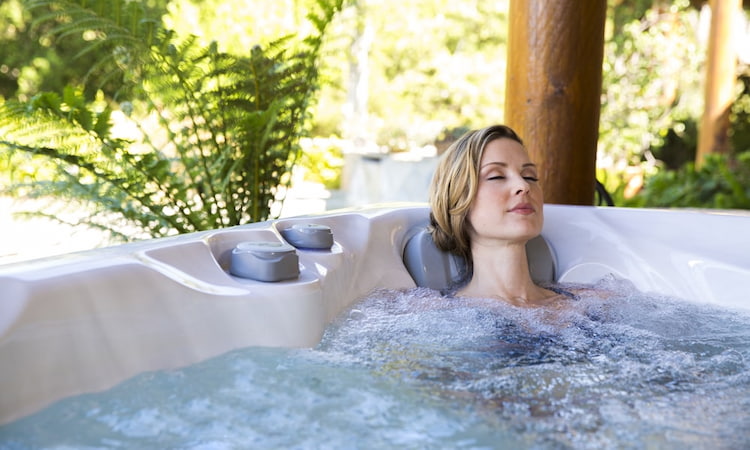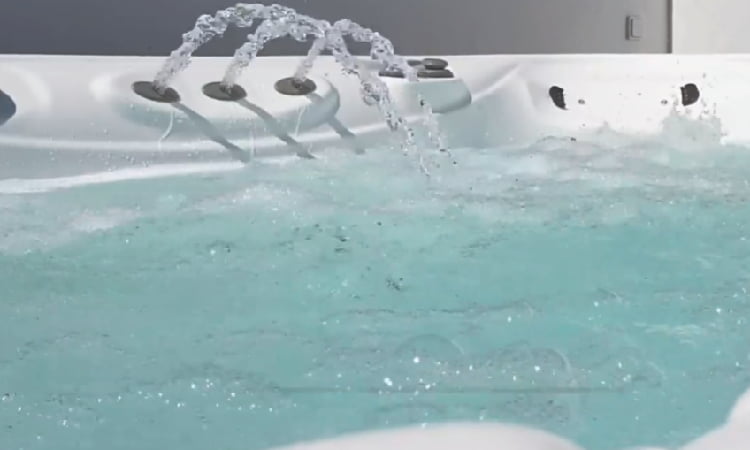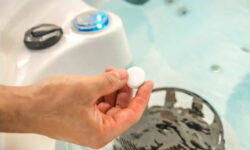You’re puzzled about using a floating chlorine dispenser in your hot tub, aren’t you? Don’t worry, you’re not alone.
Yes, you should use a floating chlorine dispenser in a hot tub. A floating dispenser efficiently and gradually distributes chlorine in the water, helping to keep it sanitized and safe for use. It ensures that the chlorine is spread evenly throughout the hot tub, preventing any areas from being over or under-chlorinated.
It’s essential to know the benefits, drawbacks, and alternatives before making your decision. We’ve got all the details you need to keep your hot tub clean and safe.

Quick Navigation
- Understanding the Role of a Floating Chlorine Dispenser
- Pros and Cons of Using a Floating Chlorine Dispenser in Your Hot Tub
- Alternatives to Floating Chlorine Dispensers for Hot Tubs
- Maintenance and Safety Tips for Floating Chlorine Dispensers
- Making the Right Choice: Is a Floating Chlorine Dispenser for You?
- Frequently Asked Questions
- Conclusion
Understanding the Role of a Floating Chlorine Dispenser
Before you decide, it’s crucial you understand the role of a floating chlorine dispenser in maintaining your hot tub’s cleanliness. This device, simple in design yet mighty in function, plays an irreplaceable part in your hot tub maintenance routine.
The floating chlorine dispenser’s primary task is to distribute chlorine evenly throughout your hot tub. It’s designed to hold chlorine tablets, gradually releasing the chemical into the water. This steady, consistent distribution ensures that your hot tub’s water remains clean and safe for use. Without it, you’d be manually adding chlorine, a process that can lead to inconsistent levels and potential skin irritation.
Moreover, the dispenser provides a convenient and safer alternative to handling chlorine. It’s not just about ease; it’s also about safety. Chlorine can be hazardous if mishandled, causing skin, eye, and respiratory issues. A floating dispenser minimizes the risks involved with direct contact.
Pros and Cons of Using a Floating Chlorine Dispenser in Your Hot Tub
You’ll want to weigh the pros and cons of using a floating chlorine dispenser in your hot tub, as this decision plays a key role in your hot tub maintenance routine. Let’s dive into both sides so you can make an informed decision.
The advantages of using a floating chlorine dispenser include:
- Simplicity: It’s easy to use. You just fill it up with chlorine tablets and let it float.
- Consistency: It provides a steady release of chlorine, keeping the water disinfected.
- Cost-effectiveness: It’s relatively inexpensive, making it a budget-friendly option.
However, there are also some downsides:
- Uneven distribution: Since it floats, it may not distribute the chlorine evenly.
- Potential damage: It could potentially harm the hot tub’s surface if it sticks in one place for too long.
Alternatives to Floating Chlorine Dispensers for Hot Tubs
Not keen on using a floating chlorine dispenser? There’s a range of alternatives you can consider, each with its own set of benefits and drawbacks.
One option you might explore is a built-in chlorinator. They’re installed directly into your hot tub’s plumbing system, slowly releasing chlorine as water flows through it. While they offer a more consistent chlorine delivery than floating dispensers, they can be difficult to install and typically require professional help.
Another alternative is using bromine tablets instead of chlorine. Bromine is gentler on the skin and eyes, and unlike chlorine, it doesn’t produce a strong smell. However, bromine is less effective at higher temperatures and more expensive than chlorine.
Saltwater systems are another option. They use a process called electrolysis to convert salt into chlorine. This method offers a steady supply of chlorine, reduces the amount of chemicals needed, and is gentler on the skin. Keep in mind, however, that the initial setup cost can be high.
Lastly, there’s the option of using non-chlorine shock treatments. These oxygen-based oxidizers eliminate organic contaminants without altering pH levels. They’re easy to use and don’t produce any unpleasant odors. Still, they’re not as effective at killing bacteria as other methods.
Maintenance and Safety Tips for Floating Chlorine Dispensers

Undeniably, it’s essential for you to follow certain maintenance and safety tips when using a floating chlorine dispenser in your hot tub.
Proper maintenance ensures a longer lifespan for your dispenser, while observing safety measures protects you, your family, and your friends from potential health risks.
Here are some fundamental tips you should keep in mind:
- Always wear protective gear like gloves and goggles when handling chlorine tablets. They’re highly chemical and can irritate your skin and eyes.
- Never overfill your dispenser. An excessive amount of chlorine can imbalance the water’s pH level, causing skin irritations and damaging your hot tub’s surface.
- Regularly check the chlorine level in your hot tub. If it’s too low, your dispenser may be blocked or you may need to add more tablets.
- Clean your dispenser regularly. Algae and other residues can block the dispenser, reducing its effectiveness.
- Store your chlorine tablets in a cool, dry place. High temperatures can cause them to disintegrate.
Making the Right Choice: Is a Floating Chlorine Dispenser for You?
It’s crucial to determine whether a floating chlorine dispenser is the right fit for your hot tub needs. This choice depends on your specific circumstances and preferences. Let’s delve into the factors that can help guide you in this decision.
Firstly, consider the size of your hot tub. If you’re dealing with a larger tub, a floating dispenser might be the perfect solution to maintain the chlorine levels efficiently.
Secondly, think about your availability. If you’re often away or don’t have the time for constant maintenance, a floating dispenser’s automatic release of chlorine can be a lifesaver.
However, it’s not all rosy. Floating dispensers can present certain challenges. The concentrated chlorine they release near the surface could potentially damage your tub’s cover. They also pose a risk if you have kids or pets that could tamper with them.
Frequently Asked Questions
You’re asking about the lifespan of a floating chlorine dispenser in a hot tub. On average, they’ll last about one year or more, depending on the quality, frequency of use, and how well it’s maintained.
You’re asking about the cost of a floating chlorine dispenser for hot tubs. Prices can vary, but generally, you’re looking at a range from $10 to $30, depending on the brand and specific features.
Yes, you can use a floating chlorine dispenser in saltwater hot tubs. It’ll disperse chlorine evenly, keeping your tub clean. However, ensure it’s designed for saltwater to avoid corrosion or other potential issues.
Absolutely, there are certain brands that stand out. Life Deluxe spa/hot tub/pool chemical, dispenser, and Aquatix Pro Large Pool Chemical Dispenser are a few of the top-rated ones. They’re effective, reliable, and user-friendly.
Yes, you can use a floating chlorine dispenser in a hot tub, even in cold weather climates. It’s designed to withstand varying temperatures and it’ll effectively maintain your hot tub’s cleanliness and sanitation.
Conclusion
In conclusion, using a floating chlorine dispenser in your hot tub is a personal choice depending on your needs and preferences. They are convenient, efficient, and easy to maintain, but can potentially cause hot spots of high chlorine.
Always remember to handle them with care. Explore alternatives and make an educated decision for a safe, clean, and enjoyable hot tub experience. Your ultimate goal should always be maintaining a healthy and balanced water chemistry.

![What is a Stabilizer in a Hot Tub? [Types of Stabilizers] what is a stabilizer in hot tubs and how does it work](https://hottubtales.com/wp-content/uploads/2023/10/what-is-a-stabilizer-in-hot-tubs-and-how-does-it-work-250x150.jpg)

![Can You Over Shock a Hot Tub? [What to Do if You Did?] can you over shock a hot tub](https://hottubtales.com/wp-content/uploads/2023/10/can-you-over-shock-a-hot-tub-250x150.jpg)


